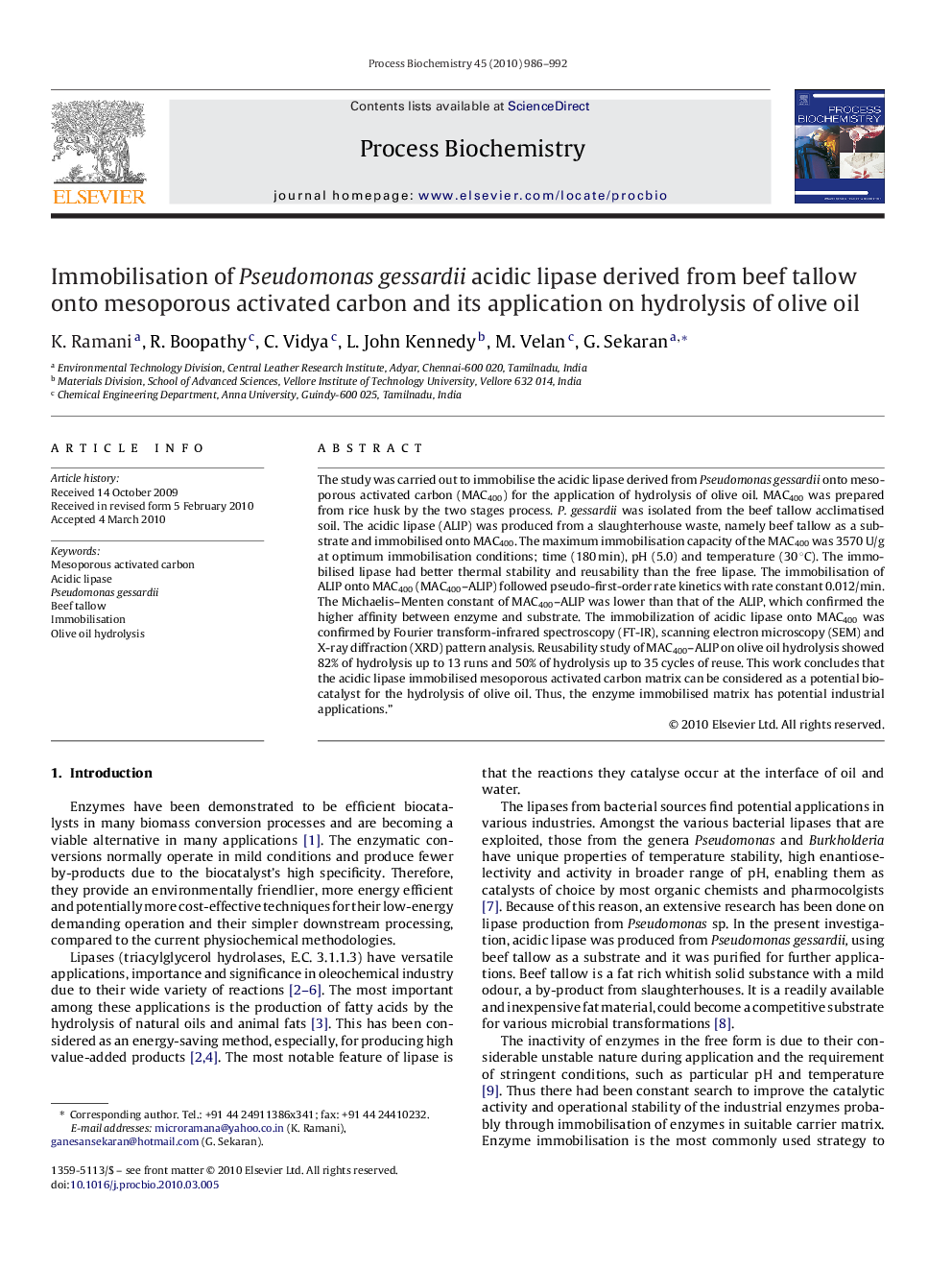| Article ID | Journal | Published Year | Pages | File Type |
|---|---|---|---|---|
| 35621 | Process Biochemistry | 2010 | 7 Pages |
The study was carried out to immobilise the acidic lipase derived from Pseudomonas gessardii onto mesoporous activated carbon (MAC400) for the application of hydrolysis of olive oil. MAC400 was prepared from rice husk by the two stages process. P. gessardii was isolated from the beef tallow acclimatised soil. The acidic lipase (ALIP) was produced from a slaughterhouse waste, namely beef tallow as a substrate and immobilised onto MAC400. The maximum immobilisation capacity of the MAC400 was 3570 U/g at optimum immobilisation conditions; time (180 min), pH (5.0) and temperature (30 °C). The immobilised lipase had better thermal stability and reusability than the free lipase. The immobilisation of ALIP onto MAC400 (MAC400–ALIP) followed pseudo-first-order rate kinetics with rate constant 0.012/min. The Michaelis–Menten constant of MAC400–ALIP was lower than that of the ALIP, which confirmed the higher affinity between enzyme and substrate. The immobilization of acidic lipase onto MAC400 was confirmed by Fourier transform-infrared spectroscopy (FT-IR), scanning electron microscopy (SEM) and X-ray diffraction (XRD) pattern analysis. Reusability study of MAC400–ALIP on olive oil hydrolysis showed 82% of hydrolysis up to 13 runs and 50% of hydrolysis up to 35 cycles of reuse. This work concludes that the acidic lipase immobilised mesoporous activated carbon matrix can be considered as a potential biocatalyst for the hydrolysis of olive oil. Thus, the enzyme immobilised matrix has potential industrial applications.”
